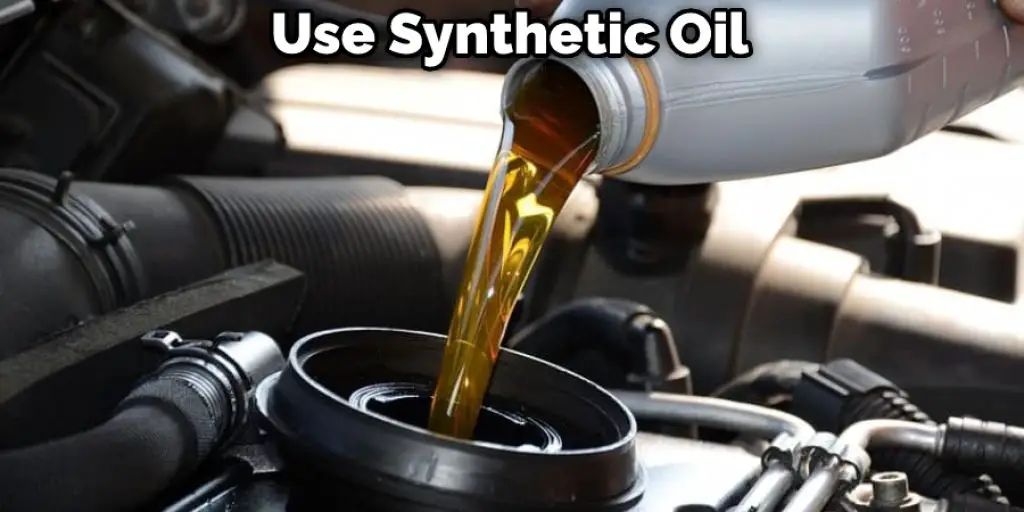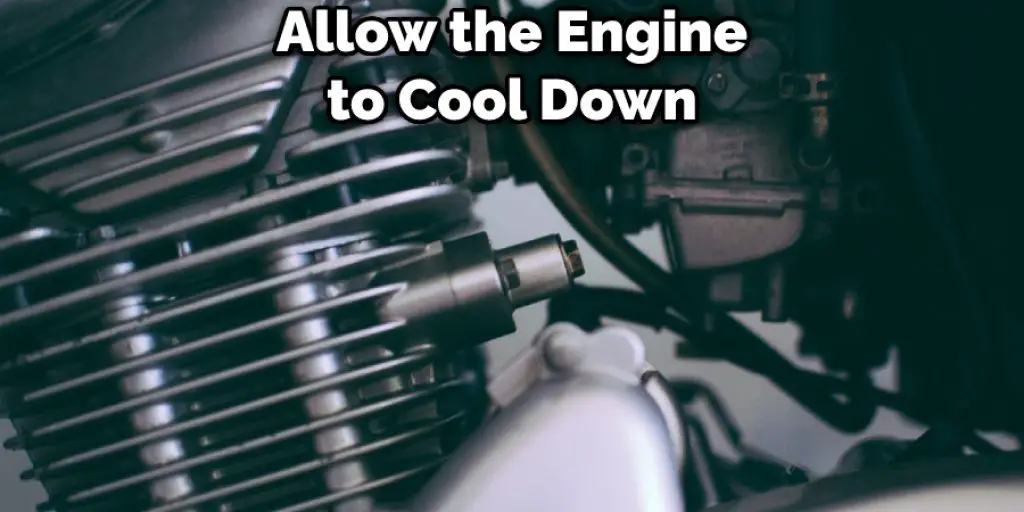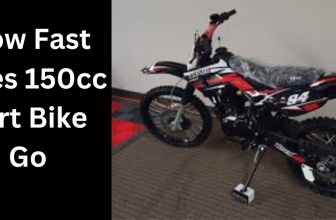How Hot Does a Dirt Bike Engine Get
You may be wondering how hot does a dirt bike engine get. Dirt bikes typically have an air-cooled engine which helps keep them from running too hot. However, there are some things you can do to help ensure your dirt bike’s engine stays as cool as possible. In this blog post, we’ll discuss the causes of engine overheating and what you can do to prevent it. We’ll also look at the different cooling systems available for dirt bikes and explain how they work. So, if you’re curious about how hot does a dirt bike engine get, read on!

What Causes Engine Overheating?
Several factors can contribute to engine overheating. The most common cause is riding at high speeds for extended periods. This pumps more heat into the engine, which can cause it to overheat. Another common cause of engine overheating is a lack of proper maintenance. Finally, if your bike’s cooling system is not working correctly, this can also cause the engine to overheat.
The other main cause of engine overheating is riding in hot weather conditions. Hotter temperatures put more strain on the cooling system, which can cause it to malfunction. If you live in a hot climate, it’s important to be extra careful about keeping your bike’s cooling system in good working order. Lastly, if you ride in dusty conditions, this can also cause the engine to overheat. The dust can clog up the cooling system and prevent it from working properly.
Why It’s Important to Keep Your Engine Cool
It’s important to keep your engine cool for several reasons. First, overheating can cause serious damage to the engine, such as warped cylinder heads and seized pistons. It can also lead to a loss of power and decreased fuel economy. And, once the engine is damaged, it can be very expensive to repair. In some cases, an overheated engine may need to be completely replaced.
Additionally, riding with an overheated engine is extremely dangerous. The engine could seize up at any moment, which could cause you to lose control of the bike. If you’re riding at high speeds, this could lead to a serious accident. Another reason why it’s important to keep your engine cool is that it can help prevent pre-ignition and knock. Pre-ignition is when the air/fuel mixture in the cylinders ignites too early. This can cause serious engine damage. Knock is also caused by the air/fuel mixture igniting too early. However, knock is a knocking noise that you’ll hear coming from the engine. Both pre-ignition and knock can severely damage your engine and decrease performance. Finally, keeping your engine cool can help extend its lifespan. If you take good care of your bike and keep the engine cool, it will last longer and perform better.

12 Effective Ways How to Prevent Dirt Bike Engine Overheating
1. Check the Cooling System Regularly
The first step in preventing engine overheating is regularly checking the cooling system. This includes the radiator, hoses, water pump, and thermostat. Ensure there are no leaks and all the parts are in good working order. If you notice any problems, have them fixed as soon as possible.
2. Use the Right Coolant
Another important step in preventing engine overheating is using the correct coolant. The coolant should be designed for use in motorcycles, and it should have a high boiling point. This will help ensure the coolant can withstand the high temperatures generated by the engine. Use only the amount of coolant recommended by the manufacturer. Avoid using too much coolant as this can cause leaks.
3. Avoid riding in Extreme Heat
If possible, avoid riding in extreme heat conditions. This includes both hot weather and hot, dusty conditions. If you must ride in these conditions, take breaks often to give the engine a chance to cool down. If possible, ride in the early morning or evening when it’s cooler.

4. Keep the Bike Well Ventilated
Ensure the bike is well ventilated to help prevent engine overheating. This includes ensuring the air intakes are not blocked, and the exhaust can flow freely. If possible, install a larger radiator to help improve airflow. Additionally, avoid riding with fairings or other bodywork that could restrict airflow.
5. Avoid High Engine Loads
Another way to prevent engine overheating is to avoid high engine loads. This includes riding at high speeds or pulling a trailer. If possible, avoid these conditions or take breaks often to give the engine a chance to cool down. Try to keep the engine rpm below 5000 to help prevent overheating. If you must ride at high speeds, use a higher gear to keep the engine rpm low.
6. Take Breaks Often
When riding in hot conditions, take breaks often to give the engine a chance to cool down. Stop at least every hour from allowing the engine to cool down. If possible, find a shady spot to take a break. This will help prevent the engine from overheating. If you’re stopped for an extended period, turn the engine off to help prevent overheating.
7. Keep the Engine Properly Lubricated
Ensure the engine is properly lubricated to help prevent overheating. This includes changing the oil regularly and using the correct type of oil. The oil should be designed for motorcycles and should have a high boiling point. This will help ensure the oil can withstand the high temperatures generated by the engine. If possible, use synthetic oil as it has a higher boiling point than regular oil.

8. Inspect the Radiator Regularly
Inspect the radiator regularly to ensure it’s clean and in good working order. This includes checking for leaks, blockages, and damage. If possible, flush the radiator and replace the coolant every two years. Additionally, check the hoses and water pump to ensure they’re in good working order.
9. Install an Oil Cooler
If possible, install an oil cooler to help prevent engine overheating. This is a device that helps cool the oil as it circulates through the engine. Additionally, consider installing a larger radiator to help improve airflow. You’ll need to tap into the engine’s oil supply and return lines to install an oil cooler. If you’re uncomfortable doing this, have a mechanic do it.
10. Add More Airflow
Adding more airflow can help prevent engine overheating. This includes installing a larger radiator and adding additional fans. Additionally, ensure the air intakes are not blocked, and the exhaust can flow freely. If possible, add an aftermarket cooling system to help improve airflow. These systems often include larger radiators and additional fans.
11. Monitor the Temperature Gauge
Monitor the temperature gauge to ensure the engine isn’t overheating. If the needle moves into the red zone, this indicates the engine is overheating. If this happens, stop the bike immediately and allow the engine to cool down. Additionally, check the coolant level and add more if necessary. Do not remove the radiator cap while the engine is hot, as this could cause serious burns.

12. Use Coolant Additives
Coolant additives can help prevent engine overheating. These additives help improve the coolant’s ability to dissipate heat. Additionally, they help protect the engine from corrosion and prevent deposits from forming. Coolant additives are available from most auto parts stores. Add the additive to the coolant according to the manufacturer’s instructions.
How Much Hot Does a Dirt Bike Engine Get?
The temperature may vary depending on the model of the dirt bike and the conditions you’re riding in. However, most engines operate within this range. If the engine temperature exceeds 225 degrees Fahrenheit, this indicates the engine is overheating. If this happens, stop the bike immediately and allow the engine to cool down. Additionally, check the coolant level and add more if necessary. Finally, do not remove the radiator cap while the engine is hot, as this could cause serious burns.
What Is the Normal Operating Temperature for a Dirt Bike Engine?
The normal operating temperature for a dirt bike engine is between 175 and 225 degrees Fahrenheit. The ideal operating temperature is around 200 degrees Fahrenheit. Your engine will run cooler if you are riding in hot weather or at high altitudes. If you ride in cold weather or lower altitudes, your engine will run warmer. You should check your engine’s temperature regularly to make sure it is running at the proper temperature.
How Hot Does Dirt Bike Oil Get?
Dirt bike oil can get quite hot, especially if you are riding in hot weather or at high altitudes. The ideal operating temperature for most dirt bikes is between 190 and 220 degrees Fahrenheit. However, some bikes can operate at temperatures as high as 250 degrees Fahrenheit. If the oil gets too hot, it can break down and degrade, leading to engine damage. To help keep your dirt bike’s engine oil cooler, make sure to change the oil regularly and use a high-quality oil filter. You can also add an oil cooler to your bike to help keep the oil at a lower temperature.
Final Words
So there you have it, everything you need to know about how hot does a dirt bike engine get. Following these tips can help ensure your engine doesn’t overheat and suffers any damage. Remember to check the temperature regularly and add more coolant if necessary. If you have any questions or want to add anything, please feel free to comment below. Thanks for reading!





